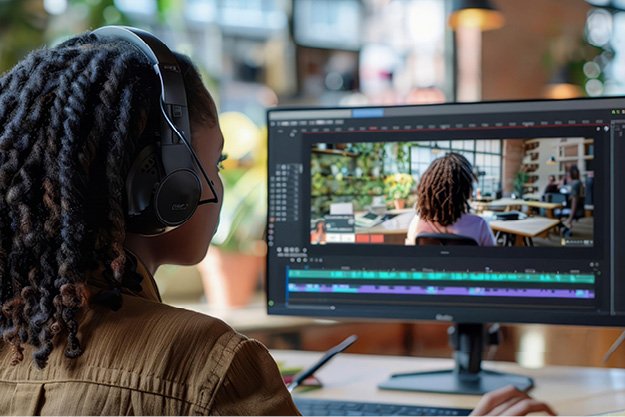Yearbooks are a gateway to the past – a memory capsule of the best friends we had in high school, our favorite teachers, and all the ups and downs along the way. Behind the colorful pages are many technical terms that are used in the yearbook world. So, whether you’re a student involved in the yearbook committee or simply curious about yearbooks in general, this glossary will help you understand common terms that help bring a yearbook to life.
1. Candid Shot:
A photograph taken spontaneously, capturing natural and unposed moments. Candid shots add authenticity to the yearbook by capturing genuine emotions and interactions.
2. Spread:
Two facing pages in a yearbook that are designed to complement each other visually. Spreads often include themed content or stories that flow seamlessly across both pages.
3. Bleed:
An image or design element that extends beyond the page’s margins, ensuring that there are no white borders once the page is trimmed. This technique creates a dynamic and visually striking layout.

4. Caption:
A brief description accompanying a photograph, providing context and details about the image. Captions can be informative, humorous, or reflective, enhancing the reader’s understanding of the content.
5. Headshot:
A tightly framed photograph focusing on a person’s face, typically used for showcasing staff members, students, or individuals who have contributed significantly to the school community.
6. Theme:
The central idea or concept that guides the design, layout, and content of the yearbook. Themes can range from nostalgia to future-focused, and they provide cohesion to the overall design.

7. Layout:
The arrangement of text, images, and design elements on a page. A well-designed layout guides the reader’s eye, creating a visually pleasing and organized experience.
8. DPI (Dots Per Inch):
A measurement of image resolution. A higher DPI indicates a more detailed and higher-quality image. Images used in yearbooks often require a minimum DPI to ensure they appear sharp when printed.
9. Cover Design:
The design and artwork on the front and back cover of the yearbook. It often incorporates the theme and sets the tone for the content inside.
10. Endsheet:
The thicker paper at the beginning and end of the yearbook that binds the pages to the cover. Endsheets provide stability and a place for personalized messages or signatures.
11. Masthead:
(A term more frequently used in the newspaper industry but sometimes used with Yearbooks, magazines and newsletters). A section that lists the yearbook staff, including editors, photographers, writers, and other contributors. It’s a way to acknowledge the hard work and dedication of those involved in creating the yearbook.

12. Spine:
The narrow edge of the yearbook that faces outward when it’s placed on a shelf. The spine often displays the year, school name, and other identifying information.
13. Die-Cut:
A technique that involves cutting out a specific shape or design from a page using a specialized tool. Die-cut elements add visual interest and can make the yearbook stand out.
14. Proof:
A preliminary version of the yearbook that is reviewed for errors, layout issues, and design inconsistencies. Proofs are essential for ensuring the final product meets the desired quality standards.

15. Senior Portrait:
A formal photograph of a graduating senior. These portraits are often accompanied by personal quotes or messages, making them a cherished part of the yearbook.
16. Index:
An alphabetical list of names, subjects, and events featured in the yearbook, along with corresponding page numbers. An index makes it easier for readers to locate specific content.
17. White Space:
Also known as negative space, is the empty area around an object. White space can be used to draw the viewer into a particular spot in the design. It prevents content from overcrowding the page.

18. Dominant Photo:
The largest photo on a spread, usually the primary visual element that captures the reader’s attention and sets the tone for the content.
20. Gutter:
The center margin of a spread where pages are bound together. Designers must consider the gutter when laying out images and text to ensure that important elements are not lost in the binding.
Crafting a yearbook is an art, but it also requires some technical skill, and attention to detail. Understanding the terms that are frequently used will help you appreciate the work that goes into them, and also help you contribute more effectively in the yearbook-making process. Whether you’re a student, a parent, or an educator, yearbooks are timeless keepsakes and will hold your memories for a lifetime.



